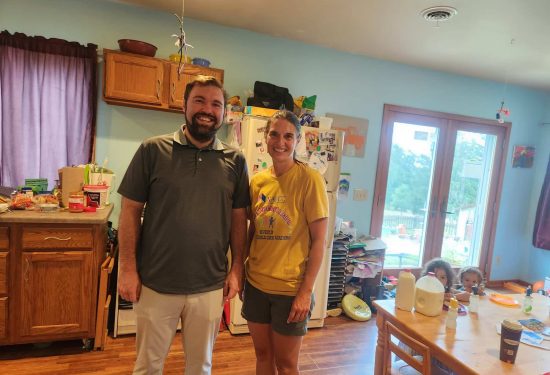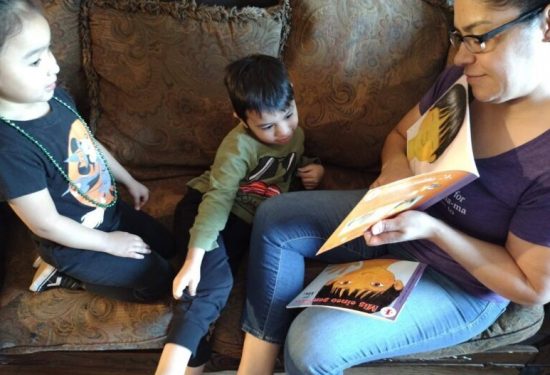We cannot allow home-based child care providers to be shut out of public funding in a time of crisis.
The Paycheck Protection Program (PPP) strived to provide potentially forgivable loan funding to small businesses as part of the CARES Act. It launched in April 2020 to help the vast number of small businesses struggling because of the pandemic, including those serving over 7 million children ages 0-5 in a home-based child care setting. In reality, more than a quarter of the $525 billion in funding went to just 1 percent of borrowers, many of whom weren’t even small businesses at all.
Over the summer, Home Grown, in partnership with Civitas Strategies and Nielsen Training and Consulting, trained intermediary organizations so they could help home-based child care providers navigate and access PPP loans. In the face of a complex application process, Home Grown assisted over 100 intermediary organizations and over a thousand home-based providers. Read an impact analysis of this initiative here.

Home Grown surveyed technical assistance participants to better understand the effort’s impact as well as the overall accessibility and success of PPP in supporting home-based child care.
We found the following:
Home Grown’s supports assisted a small group of providers in accessing approximately $2.6 million in forgivable loan support.
Participants who received support from Home Grown were more likely to be successful in their PPP applications. The Home Grown program was particularly beneficial to small business owners who represent marginalized or underrepresented groups. Of the providers surveyed who may have accessed the resources or received technical assistance from the program, 79% identified as members of a marginalized group who were at risk of being shut out of the PPP program.
Additionally, we know that providers across the country struggled to understand if they were eligible for the program, how to get good information on the program and how to access support in applying. Many providers report that they were unable to navigate the almost exclusively English language forms and portals.
Despite this small success, we found that PPP was not an ideal program to support sole-proprietor home-based providers for various reasons.
PPP was not successful in meeting the needs of women of color-owned businesses.
The PPP application process was built on the assumption that all businesses have existing business relationships with banks that would lend PPP funds to their customers. But lack of access to business banking relationships is well documented among black-owned small businesses and hindered many from accessing PPP. This had huge consequences for the home-based child care field where providers are over 97% women and over 50% persons of color. Nearly a fifth of home-based providers who did not receive a PPP loan indicated that banks would not work with them.
In our technical assistance, we found a bright spot in the banking industry, Fintechs were the most reliable source of PPP loans for home-based providers and we observed success for providers seeking loans via these financial institutions.
PPP was not successful in meeting the needs of historically under-resourced, micro-businesses of home-based child care.
Despite the Home Grown PPP Technical Assistance Program and others like it, the Bipartisan Policy Center (BPC) reported that most child care providers did not access the Paycheck Protection Program and only a tiny fraction of home-based child care providers were able to access PPP loans. According to the BPC report, the child care sector overall only received 5% of the total $521.4 billion in lending through the program, and the majority of these funds likely went to center-based programs.
Home-based providers earn an average annual child care income of $29,377 from public and private sources for an average of 56.5 hours of care a week (10 to 12 hours a day). More informal home-based providers earn on average $7,420 per year from providing child care. As small, under-resourced businesses, home-based child care providers often lack certain business infrastructure that others used to successfully apply for PPP including payroll and data systems that could produce required documents. Many providers do not have regular access to a bookkeeper or accountant who could assist them. This lack of business infrastructure prevented access to this resource.
Created as a loan product, PPP discouraged home-based providers.
Home-based child care providers operate on razor thin margins making the prospect of paying back loans unlikely. The roll out of PPP was understandably shaky given the global health and economic crisis, and this resulted in a lack of clarity on forgiveness criteria, which continued to shift over the months of the program. Many home-based child care providers did not apply for PPP because they were skeptical of the ability to be forgiven or worried that they would add debt to their existing untenable financial situation.
Simultaneously, we saw providers in California taking on credit card debt to keep their businesses afloat and to continue to serve essential workers. That providers would take on credit card debt rather than PPP loans demonstrates that the design and roll out of PPP was not appropriate for HBCC providers.
Moving Forward
Despite its goal of supporting small businesses through pandemic, the Paycheck Protection Program did not reach many of the smallest businesses that needed it the most. Home Grown’s technical assistance program succeeded in helping a number of providers access these funds, but without this support, many home-based child care providers were shut out of this public funding in a time of crisis.
As Congress considers additional relief funding we recommend the following changes to ensure the program can benefit home-based providers:
- Small business support should be structured as grants and not loans. If future PPP supports are offered as loans the forgiveness criteria must be clearly communicated. Most home-based providers who applied requested loans of about $6,000; SBA could assure that loans below a threshold are automatically forgiven to encourage participation of these critical businesses.
- Programs must include funding for technical assistance and access support. Grant funds should be made available to intermediaries and networks with existing relationships to home-based providers to assist them in accessing the program.
- Really small businesses like home-based child care with annual revenue under $50,000, limited accounting systems, and less formalized relationships with banks need more time to navigate and apply for funds. Setting aside funds for businesses of this size and structure (minority/women-owned sole-proprietorships) would improve access and success of the program for home-based child care providers. These small businesses may need more time to be successful and should not have to compete with much larger entities for the same pot of resources.
Our society needs home-based child care providers. They are essential workers who enable other essential workers to their jobs and are the epitome of small businesses struggling under a crushing pandemic. Home-based child care providers are the very people who should have been helped by the PPP. They need systems that support them in accessing public funding, not barriers that shut them out.
Acknowledgment: We are thankful for the partnership of Gary Romano and the team at Civitas Strategies in this initiative and review of this posting.
References




